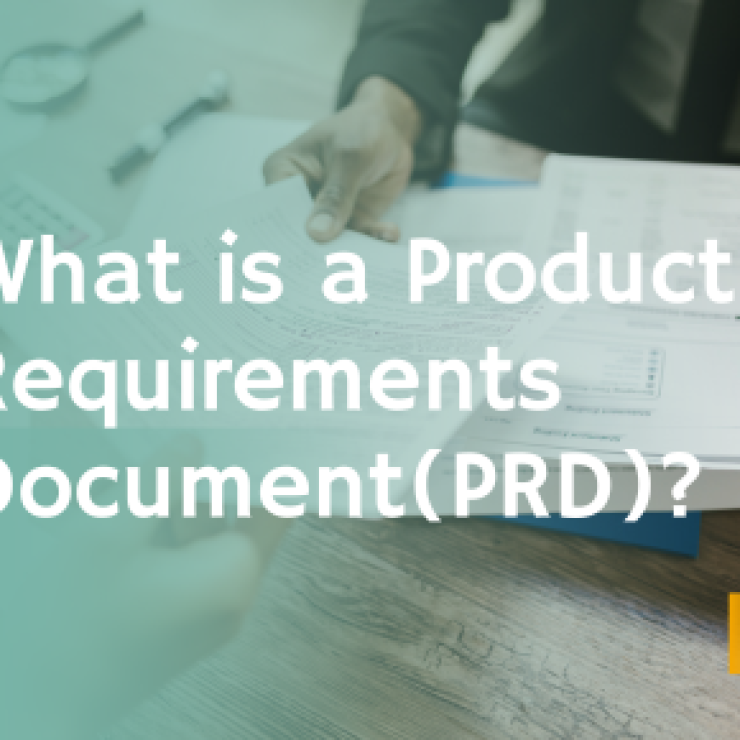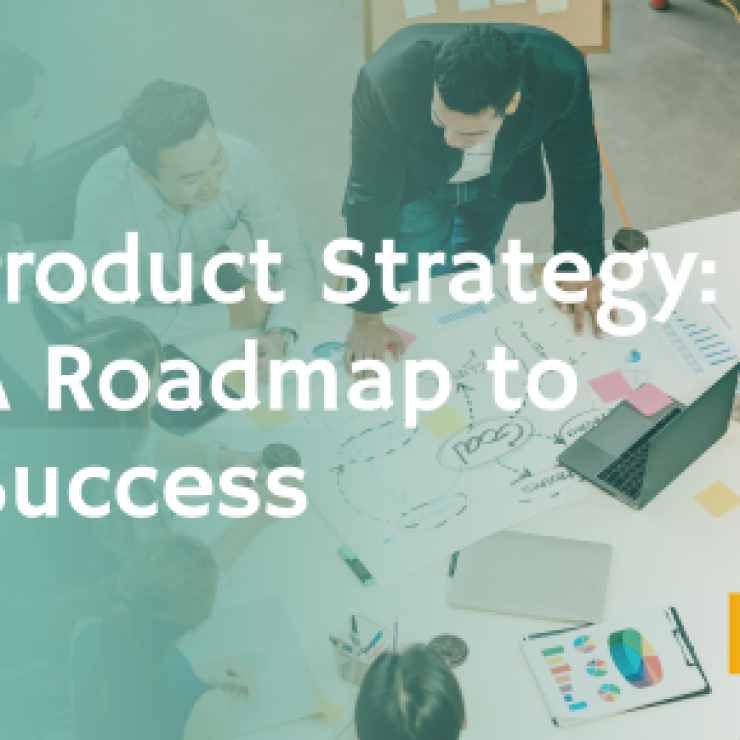In today’s fast-paced and competitive business landscape, the concept of a Minimum Viable Product (MVP) has emerged as a crucial strategy for startups and established companies alike.
An MVP serves as a preliminary version of a product that is developed with the minimum set of features required to solve a specific problem and gather valuable user feedback.
This blog will delve into the philosophy behind MVPs, their importance in product development, real-life examples of successful MVPs, steps to develop an MVP, common mistakes to avoid, the synergy between MVPs and Agile development, and the future of MVPs.
Definition of Minimum Viable Product (MVP):
Before exploring the various aspects of MVPs, it is essential to establish a clear definition. A Minimum Viable Product (MVP) is a stripped-down version of a product that allows businesses to test their assumptions, validate their ideas, and gather valuable feedback from early adopters.
An MVP typically consists of the most essential features necessary to solve a specific problem or fulfill a core need of the target market.
Explanation of the Lean Startup Methodology and how MVP fits into this concept:
The Lean Startup methodology is a modern approach to business and product development that was introduced by Eric Ries. It’s designed to teach you how to drive a startup and how to steer, when to turn, and when to persevere and grow a business with maximum acceleration.
The methodology is centered around the concept of getting a product into customers’ hands as quickly as possible, learning from the experience, and iterating on the product based on real-world feedback. It is based on a continuous innovation cycle of “Build-Measure-Learn.”
- Build: Create a Minimum Viable Product (MVP) – a version of the product with just enough features to attract early-adopter customers and validate the product idea early in the product development cycle.
- Measure: Once the MVP is launched, measure how it performs in the real world. This could involve looking at how customers use the product, which features they use most, how often they use the product, etc.
- Learn: Use the data collected during the Measure phase to gain insights about the product and its users. The objective is to learn as much as possible about the customers’ needs, preferences, and the product’s market fit.
If the MVP meets the needs of the customers, then the startup can move towards finalizing the product, adding features, and scaling up. If not, the startup should use the insights gained to pivot, which could mean making a fundamental change to the product, and then going through the Build-Measure-Learn loop again with a new MVP.
The MVP is a critical component of the Lean Startup methodology because it allows startups to validate their business hypotheses with minimal resource expenditure.
By testing a simple version of the product in the market, startups can learn whether they’re on the right track or if they need to change their approach. This process helps reduce the risk of product failure and can lead to the creation of a product that truly meets customer needs.
Importance of MVP in Product Development:
The concept of a Minimum Viable Product (MVP) has become an essential aspect of product development, particularly in fast-paced and innovative sectors such as technology and startups. Its significance can be attributed to several key factors:
Idea Validation:
MVP helps in testing and validating a business idea before investing considerable time and resources into full-scale development. It allows businesses to gauge the market’s reaction to a product before it is fully finalized, thereby minimizing risks associated with launching a new product.
Resource Efficiency:
Creating an MVP requires fewer resources compared to developing a full-featured product, which makes it a more cost-effective way of testing ideas. This is particularly beneficial for startups and small businesses, which may have limited resources at their disposal.
Faster Time to Market:
With an MVP, businesses can launch a product faster since it only needs to have enough features to satisfy early customers. This rapid market entry allows businesses to secure a foothold in the market before competitors do.
Customer-centric Development:
MVPs are built around core functionalities that solve a specific problem for the customer. This focus on customer needs fosters a customer-centric approach to product development, ensuring that the final product is highly tailored to its intended users.
Facilitates Iterative Development:
MVP aligns well with iterative development methodologies, such as Agile. It allows for continuous improvement based on real-world feedback. Features can be added, removed, or modified based on user responses, making the product better over time.
Learning and Adapting:
The feedback gained from the initial users of an MVP provides invaluable insights into what works and what doesn’t. These insights allow businesses to learn, adapt, and pivot if necessary, which can be crucial in today’s rapidly evolving markets.
Building a User Base:
Lastly, an MVP allows businesses to build a user base and create buzz in the market even before the final product is launched. These early users can become advocates for the product, aiding in its promotion when the final version is released.
In summary, an MVP plays a crucial role in modern product development. By focusing on core functionalities and using real-world feedback for improvements, businesses can ensure that their final product meets the needs of their target audience, while also minimizing risk and resource expenditure.
Real-Life Examples of Successful MVPs:
Examining real-life examples of successful startups that began with an MVP can provide valuable insights into the power of this approach.
Case studies of companies like Dropbox, Airbnb, and Zappos demonstrate how these businesses initially launched with a simple version of their product to test the market, gain traction, and refine their offerings based on user feedback.
Steps to Develop an MVP:
A. Identifying and understanding your target market:
The first step in developing an MVP is to identify and understand your target market. Conduct thorough market research, analyze customer needs, and identify the problem or pain point your product aims to solve.
This understanding will help you define the scope and features of your MVP more effectively.
B. Defining the problem and the solution (your product):
Clearly define the problem you are addressing and articulate how your product will solve it. This step is crucial for determining the core features that should be included in your MVP.
C. Creating a user flow:
Map out the user flow to understand how users will interact with your product. This step helps identify the key functionalities and user experience elements that should be prioritized in the MVP.
D. Deciding on the essential features to include:
Identify the minimum set of features required to solve the core problem and deliver value to users. Prioritize these features to ensure that your MVP remains focused on the essentials.
E. Developing, testing, and launching the MVP:
With a clear understanding of the target market, problem, and essential features, proceed to develop your MVP. Test the MVP with a select group of early adopters, gather feedback, and iterate based on the insights gained. Once refined, launch the MVP to a wider audience, leveraging the feedback received to inform future iterations.
Common Mistakes When Developing an MVP and How to Avoid Them:
While MVP development offers numerous benefits, certain common mistakes can hinder its effectiveness.
A. Overcomplicating the product with unnecessary features:
Adding unnecessary features to an MVP can lead to increased development time, resource wastage, and confusion for users. It is crucial to maintain a focus on the core problem and ensure that the MVP includes only the most essential features.
B. Ignoring market feedback:
One of the main purposes of an MVP is to gather user feedback and incorporate it into the product’s evolution. Ignoring or discounting this feedback can hinder the learning process and prevent businesses from making informed decisions.
C. Misunderstanding the concept of ‘minimum’ in MVP:
The term ‘minimum’ in MVP refers to the minimal set of features required to deliver value and validate the product concept. It does not mean compromising on quality or user experience.
Striking the right balance between the minimum viable set of features and a compelling user experience is crucial.
The Future of MVPs:
The Minimum Viable Product (MVP) concept has become a foundational element of modern product development, particularly in the technology and startup sectors. As we look toward the future, we can see several emerging trends and potential shifts that could further evolve the way MVPs are designed, implemented, and utilized.
Increased Emphasis on User Experience (UX):
As the competition grows fiercer in the digital marketplace, businesses are realizing that an MVP is not just about basic functionality, but also about delivering a satisfying User Experience (UX).
Future MVPs will likely place more importance on UX design, ensuring that even the simplest version of a product is enjoyable and easy to use.
Integration with Agile Development:
The Agile methodology of iterative development has proven its synergy with the MVP approach. In the future, we can expect to see these two concepts becoming even more intertwined, with Agile sprints often resulting in successive MVPs, each building on the last to deliver constant value and improvements to the user.
Expanding Role of Data:
With the advancement of data analysis technologies and methodologies, MVPs will increasingly be data-driven.
Quantitative and qualitative user feedback will be used not just to test the validity of an MVP, but also to shape its development from the earliest stages.
AI and Automation:
As Artificial Intelligence (AI) and automation continue to progress, they are likely to play a larger role in MVP development.
AI could assist in analyzing user data to identify key features for inclusion in the MVP, while automation could speed up the process of developing and testing the MVP.
More Customer-Centric:
Given the growing consumer awareness and demand for personalized experiences, MVPs of the future will be even more customer-centric.
Businesses will have to focus on creating MVPs that not only solve a problem but also resonate with the end-user on a personal level.
MVP in New Industries:
While MVPs are common in tech and digital product development, we can expect the concept to spread to more traditional industries as they continue their digital transformation journeys.
From healthcare to manufacturing, MVP could become a standard approach to product development in numerous sectors.
Conclusion:
Embracing the concept of Minimum Viable Products (MVPs) is crucial for businesses seeking to navigate the dynamic and competitive landscape of product development.
MVPs offer a systematic approach to test and validate product ideas, reduce risks, optimize resource allocation, and foster a customer-centric approach.
By understanding the philosophy behind MVPs, learning from successful case studies, and integrating Agile methodologies, businesses can unlock the potential for innovation, success, and market viability.
As the market evolves, the concept of MVP will continue to adapt and pave the way for future product development practices.




